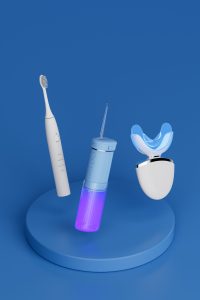In today’s fast-evolving manufacturing landscape, ensuring consistent product performance is crucial for maintaining customer satisfaction and operational efficiency. However, a growing challenge that many companies now face is Replacement Part Scarcity, which seems to exacerbate Noise Level Spikes during equipment operation. This blog delves into the underlying reasons for this phenomenon, examines its impacts, and proposes strategies to mitigate these issues.
The Challenge of Replacement Part Scarcity in Modern Manufacturing
As companies strive to maintain high-quality output in a competitive global market, the availability of replacement parts plays a pivotal role. Replacement Part Scarcity occurs when critical components become difficult to source due to supply chain disruptions, market volatility, or simply outdated inventory. Such scarcity not only prolongs repair times but can also force manufacturers to use substitute parts that may not fully meet the original specifications. This, in turn, can lead to unexpected changes in device behavior, including sudden Noise Level Spikes that compromise both performance and customer satisfaction.
How Component Quality Directly Impacts Noise Levels
Reliable components are essential to keeping manufacturing equipment and consumer products running smoothly. Component scarcity pressures companies to use lower-quality alternatives or degraded parts over time. Manufacturers may not design these substitutes to effectively absorb or dampen vibrations, leading to noise level spikes during operation. An increase in noise not only serves as a visible symptom of underlying issues but can also reduce the operational lifespan of devices by stressing mechanical and electronic components.
Identifying the Root Causes of Noise Level Spikes
The occurrence of Noise Level Spikes is often a multi-faceted problem. In addition to the use of inferior replacement parts, several factors can contribute to this phenomenon:
- Material Mismatch: Replacement parts that are not fully compatible with original specifications may exhibit different mechanical properties, leading to poor vibration absorption.
- Improper Fit or Installation: Scarcity can force rushed installations where parts are not fitted securely, resulting in loose connections that amplify operational noise.
- Systemic Wear and Tear: As original parts wear out over time, gaps or misalignments occur, which, if not corrected by high-quality replacements, can cause abrupt increases in noise levels.
Understanding these causes is essential for developing targeted strategies to address the issue effectively.
The Cascading Effect: How Scarcity Propagates System-Wide Issues
When a critical component is replaced with a substandard alternative due to Replacement Part Scarcity, its incompatibility can trigger a cascade of issues across the entire system. In many cases, the initial increase in noise is not isolated—it can cause secondary failures by overloading other components or altering system dynamics. This cascading effect can lead to further maintenance challenges, additional parts failures, and ultimately, a deterioration in overall product reliability. Preventing such chain reactions requires a holistic approach to sourcing, quality control, and system design.
Mitigation Strategies: Ensuring High-Quality Component Supply
To address these challenges, companies should consider several proactive measures:
- Diversifying the Supply Chain: Establishing partnerships with multiple suppliers can help mitigate the risks associated with Replacement Part Scarcity.
- Investing in Inventory Management: Implementing robust forecasting and inventory control systems ensures that critical components are available when needed.
- Rigorous Quality Assurance: Enhancing quality control protocols for both original and substitute parts can reduce the likelihood of Noise Level Spikes. Regular testing and certification of replacement parts ensure they meet or exceed original performance specifications.
- Collaboration with R&D: Research and development teams should work closely with manufacturing to design components that are more resilient to variations in supply and can maintain performance standards even when replacements are used.
Future Outlook: Building Resilient and Noise-Optimized Systems
Looking ahead, continuous improvement and innovation will be key to overcoming the dual challenge of Replacement Part Scarcity and Noise Level Spikes. Manufacturers can leverage emerging technologies such as advanced data analytics, AI-driven predictive maintenance, and smart manufacturing techniques to better anticipate part shortages and their impact on system performance. By integrating these solutions, companies can design more resilient systems that maintain optimal noise levels, even when facing supply chain disruptions. This forward-thinking approach not only enhances product reliability but also reinforces long-term brand credibility in a dynamic market.
Conclusion
The interplay between Replacement Part Scarcity and Noise Level Spikes poses significant challenges for modern manufacturers. The scarcity of high-quality replacement parts can disrupt system stability and lead to abrupt increases in noise, ultimately affecting device performance and customer satisfaction. By addressing the root causes, enhancing quality control, diversifying the supply chain, and investing in innovative maintenance strategies, companies can build resilient systems that safeguard against these disruptive issues. Continuous innovation and proactive management are essential to securing long-term success in an increasingly competitive market.
Interested in exploring strategies to stabilize your supply chain and minimize noise disruptions? Contact us today to learn more about advanced solutions tailored to your specific needs.




